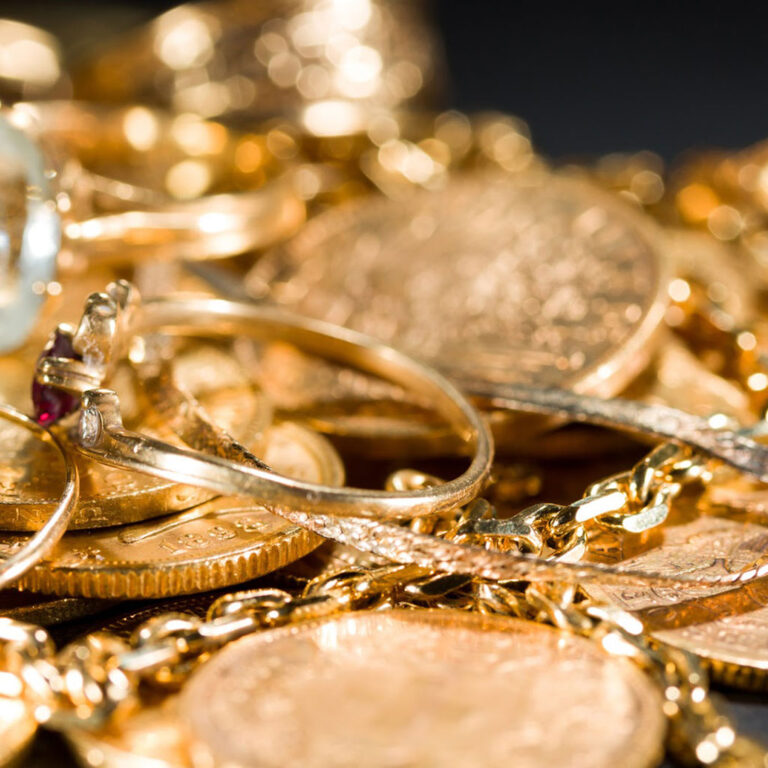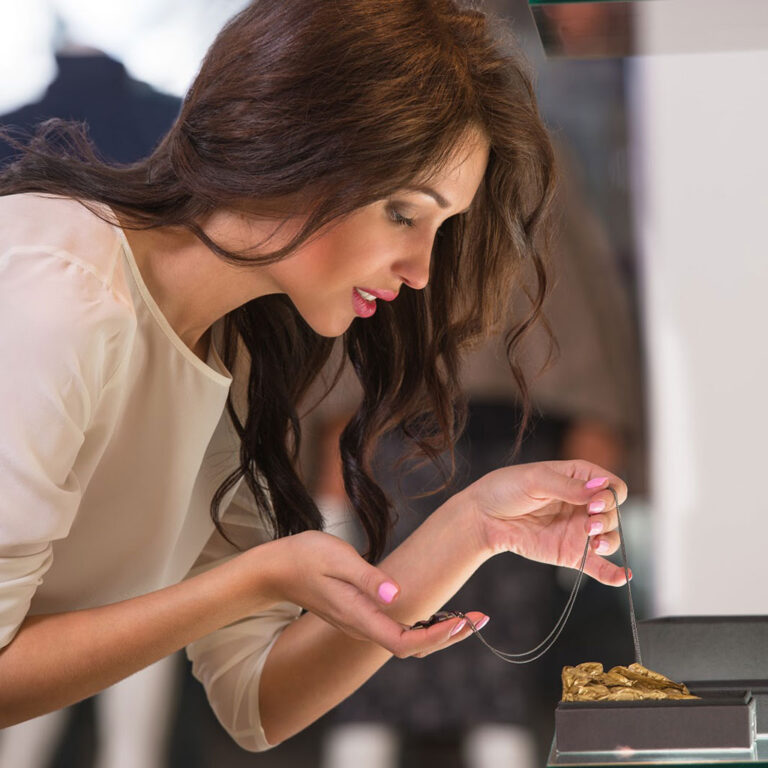Chinese Gold
Table of Contents
Chinese gold is generally pure 24 karat and is characterized by its bright yellowish color and soft, malleable texture. Another important feature is that this type of pure gold will never tarnish or rust. It is often marked with Chinese characters, sometimes revealing the maker’s name – and it will often be marked with the numbers 999, 9999 or 999.5 – a testament to its purity.
Chinese gold consists of several mediums including jewelry, statues and ornamental figurines.


Where does Chinese gold come from?
China gets its gold two different ways:
1) By mining for it. China is the world’s top producer of gold. Its gold production comes mostly from the eastern provinces including Shandong, Henan, Fujian and Liaoning. In more recent years the western provinces have ramped up production, specifically in Guizhou and Yunnan. Chinese mines are responsible for the production of nearly 500 tonnes of gold per year.
2) By importing it from other countries, including Switzerland, London, Australia, Singapore and Hong Kong – China is now the largest importer of gold.
It should be noted that most of the gold mined in China will stay there. It is used to create jewelry, ornamental figurines and other items for its citizens – a byproduct of demand spurred by a growing middle and upper class.
How many karats are in Chinese gold?
Like many countries in the East, Chinese gold holds a high standard for its gold and is therefore usually 24 karats. But why is the standard so high? In China, gold is meant to be worn and even shown off in the form of jewelry, heirlooms and decorations – all conveying special meaning in Chinese culture. Additionally, gold is an important aspect in traditional Chinese wedding ceremonies (which you’ll hear about further next).
This is why the standard is so high and Chinese gold jewelry is generally 24 karat. That said, some grooms may opt for a wedding ring with less than 24 karats of gold (maybe 18k or 22k) to make room for the expense of other 24 karat jewelry pieces for the bride, including earrings, necklaces, bracelets, etc.

Common types of Chinese jewelry
Jewelry is an important aspect of Chinese culture – especially gold jewelry. As we began discussing (above) Chinese traditions dictate that a groom’s family give a bride jewelry as part of her “bride price.” When it comes to jewelry, typical bridal gifts include earrings, necklaces and bracelets – bangle bracelets are especially popular with modern Chinese brides.
Popular jewelry patterns include: dragon and phoenix motifs, pigs and mandarin ducks. These all-gold figurines are often embellished atop gold bracelets, necklaces and bangles. Additionally, gold hair clips and hairpins are popular with modern Chinese brides. They are often adorned with floral designs including lilies and peonies. The level of detail that goes into these designs is impeccable.
Jadeite
In addition to gold jewelry, jadeite is important to Chinese culture and tradition – as it is a symbol of luck. Often Jadeite is incorporated within gold designs. For example a jadeite pendant may feature gold embellishments or a gold chain.
How can you tell if it’s Chinese gold or not?
Remember, Chinese gold has a high standard of purity and because of this usually bears the numbers 999, 9999 or 999.5. Another hallmark of Chinese gold is Chinese characters, engraved on the inside or bottom of the gold item. The characters can represent a couple different things including the purity and maker.
Here is an example of a Chinese character; this character is used to signify pure gold with a 99.0% minimum: 足金
Another way to tell if gold is from China or Hong Kong is to know its exact provenance – where is it from? Did the gold piece come with identifying papers?
Can you sell Is Chinese gold pawnable in the USA?
The short answer is yes – but you need to go to a reputable pawn shop that will give you fair market value for your gold item.
It’s important that you know two things before attempting to pawn your Chinese gold:
1) The value of your piece (before you even find a buyer ).
2) Ask: can the buyer test for 24 karat gold? Make sure they have the expertise to value your item correctly.
Can you buy Chinese gold jewelry?
Yes – however the Yuan is strong against the American dollar right now. You can still get a good deal for gold because the cost of goods is much less expensive in China.
Here are some things you should know before purchasing Chinese gold jewelry:
1) Know the dealer – find a reputable dealer, someone that isn’t trying to scam you or devalue your gold piece. Stick with them for the process.
2) Gold price is dictated by the world market, meaning prices are the same (by ounce) everywhere in the world. Where you can save money with Chinese gold is in the craftsmanship of the piece, which will cost less to make because of the low cost of labor.
3) If you are buying gold jewelry in China and have bought more than 50 grams of gold you will need to take it to customs for paperwork processing.
Choose Crown Gold Exchange
Why choose us? Let me tell you. Crown Gold Exchange holds the utmost respect for you and your valuables. When you visit one of our locations, we make sure that you feel welcome, and that your property is protected. We use industry-standard equipment to ensure accurate measurement of your valuables, and we have a special process to keep your valuables safe. Our accuracy enables us to offer you top dollar, and we have several different payment methods available for your convenience, so you won’t be waiting around to get paid.
Crown Gold Exchange will purchase any kind of gold you bring us, including 8-karat, 10-karat, 14-karat, 18-karat, 21-karat, 22-karat, 24-karat, or anything else. We buy gold bars, gold bullion, gold jewelry and some gold plated items like pocket watches. If you happen to be in possession of an exclusive piece made by a top gold designer such as Cartier, Tiffany, Rolex, or Patek Philippe, we will often pay more than the weight of the item. Such special pieces often command a higher price on the secondary market due to their superior craftsmanship.
